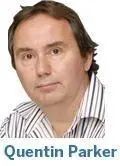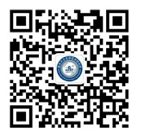【CHINADAILY HONG KONG】World would benefit if the West were open to greater scientific collaboration
Published:01:47, August 16, 2023Updated:10:16, August 16, 2023 By Quentin Parker
The joint 4th World Photonics Conference and 12th Applied Optics and Photonics China (AOPC) 2023 meeting was held last month at the China National Convention Center within Beijing Olympic Park. This showcased awards for excellence across the Chinese photonics landscape, where rapid, amazing technological progress is being made. Hong Kong was well-represented, with two of five plenary talks given by Professor Xiang Zhang, president and vice-chancellor of the University of Hong Kong, and Professor HS Kwok of the Hong Kong University of Science and Technology.

Sixteen mini-conferences in separate meeting rooms covered a vast breadth of cutting-edge global photonic technological development, including biomedical imaging, quantum computing, artificial intelligence in optics and photonics, and novel miniaturized photonic devices. It was clear that these areas of research and industry are in excellent health in China.
I was co-chair of the conference on novel technologies and instruments for astronomical imaging and spectroscopy. My own talk on the HKU-led 6U MeV CubeSat project for high-energy gamma ray astronomy was given to a mix of academicians, senior scientists, engineers and, importantly, students. I also gave a lecture to a crowd of young students on HKU’s Laboratory for Space Research, the emerging newspace economy, and asked “does China have the ‘right stuff’ talentwise?” The question was rhetorical because it is clear that it does. Though over 90 percent of the delegates were Chinese, the conference was conducted in English, the international language of science and technology.
I met Kevin Ho and Mark Barril, two engineers from the Canada-France Hawaii Telescope; a professor from Taiwan; and a Dutch professor who is based at an Australian university. Together, we represented a microcosm of the international nature of science without obvious borders.
I also met the indefatigable Professor Cui Xiangqun, from the Chinese Academy of Science. She remembered me from 29 years ago when we were both visiting Cambridge, England, even recalling that we talked about the Large Sky Area Multi-Object Fibre Spectroscopic Telescope (LAMOST), the amazing Chinese multiobject spectroscopy system and its unique wide-field Schmidt-type, all-reflecting telescope. It was a mere concept back then but has now celebrated taking over 23 million individual spectra of stars across the northern skies! Nothing as significant has ever been achieved in the history of astronomy. Many Western observers scoffed at the time, but like many things with China, they have been proved wrong. Expectations are not just met but exceeded. In turn, it has inspired many of the new and cutting-edge projects at the conference.
This AOPC 2023 event was followed by a two-day workshop, New Generation Twin Spectroscopic Telescope Initiatives, at the National Astronomical Observatories of China. This meeting sought to build on the LAMOST legacy with key international partners. It was organized by Professor Xue Suijian, who believes in the enormous value of international scientific collaboration and exchange by getting us all together, including via Zoom to colleagues in Hawaii and Canada. The hospitality to all was warm and genuine, the interest real and unforced, and the opportunities exciting and timely.
A common thread was that every senior Chinese delegate I met had spent time, often many years, in Western countries, mostly the US or UK, often undertaking further education in Ivy League or top UK universities. It was clear these experiences were extremely valued and enriching to both sides and led to genuine lifelong friendships and valuable collaborations that persist today.
These exchanges are precious and even more important now. As the multipolar world emerges and threats arise, it is these grassroots senior and multilevel contacts where trust has been established and rewarded over decades that can have positive influences. What if instead of a declining number of Chinese STEM students who voyage abroad (and who will be the scientific, technical and general leaders of tomorrow), China doubled down and sent even more talent overseas? What positive benefits might accrue in a rapidly changing world where trust and cooperation are not just desirable but are becoming existential across national, cultural and ethnic divides?
The inspiring thing was the deep desire of both conference and workshop delegates, international and Chinese, to talk, exchange, collaborate and share in an open and collegiate way. This is what happens when you bring scientists, engineers and technologists together — it is what we do; it is part of our makeup and general inquisitiveness that led to our chosen interests and career paths in the first place. We just can’t help but share our latest discoveries, breakthroughs and initiatives. This often generates powerful synergies and new collaborations of enormous shared value and is needed now more than ever, given the threats we all face. A key example of these wonderful collaborative forces in action is the next-generation Chinese astronomy mega telescope project in terms of multiobject spectroscopy. It will use a 6.5-meter-diameter main mirror from Tucson, Arizona; a massive telescope dome from Italy; and a highly complex fiber positioning system from Switzerland.
We need more of this, not less. Such meetings break down misconceptions and barriers, and build trust, collaborations and friendships across cultures, peoples and nations for positive win-win outcomes.
In conclusion, the trouble with scientific and technological sanctions imposed on China by certain Western interests is that they are likely to be counterproductive. It actually spurs China to find its own, often better, solutions.
China has an enormous capacity to apply massive resources not just to catch up but often overtake in a given area via the fundamental research that this focus permits to develop new technologies; if there were cooperation and partnership instead, more-efficient and mutually beneficial outputs are likely.
This was evident at AOPC 2023, when looking at near to mid-infrared detector technologies (which we use in astronomy), where restrictions imposed on China’s access to these detectors have simply created new Chinese directions in detector research based on completely different “superconducting” technology that, when mature, will have significant advantages.
So let’s collaborate where sensible; compete where prudent; and always try to engage with each other for a technologically better and safer world.
The author is a professor in the Faculty of Science at the University of Hong Kong, the director of its Laboratory for Space Research, and vice-chairman of the Orion Astropreneur Space Academy.
The views do not necessarily reflect those of China Daily.
原文链接:https://www.chinadailyhk.com/article/345979

